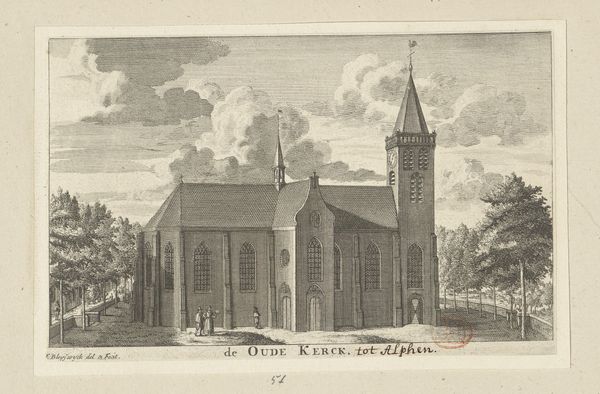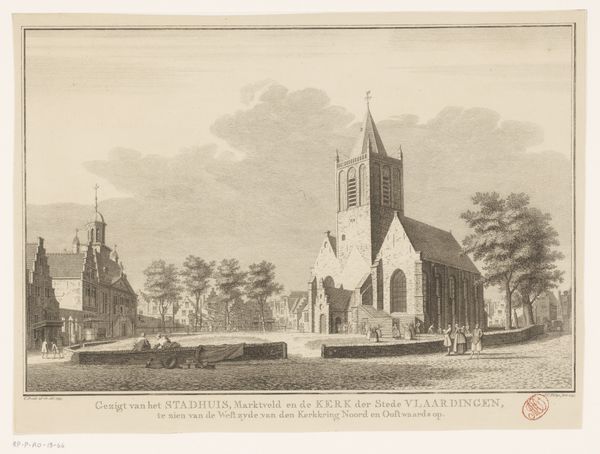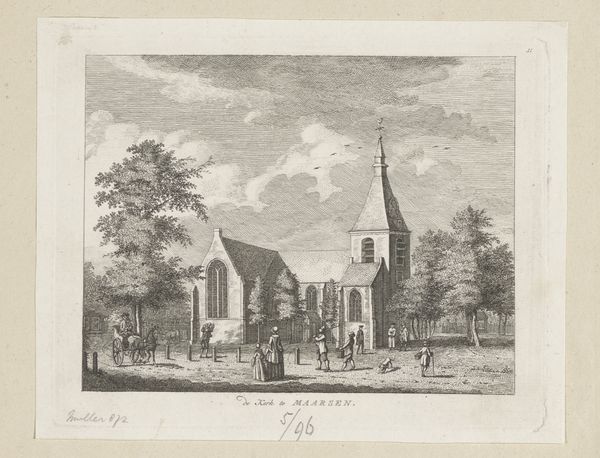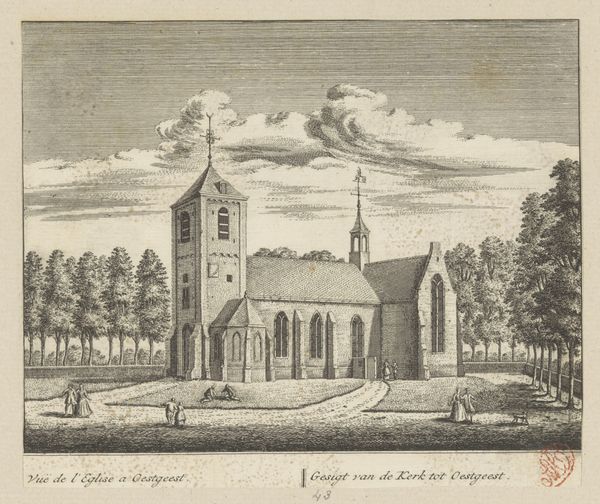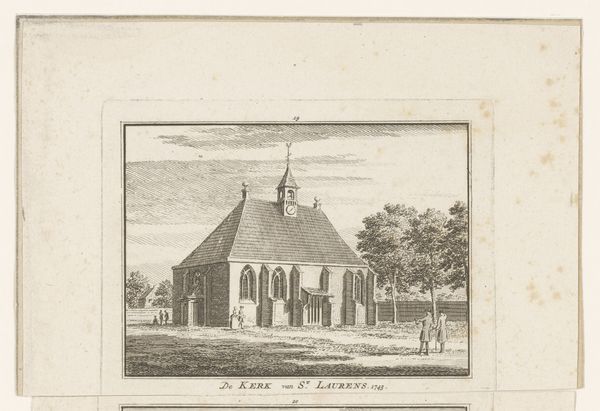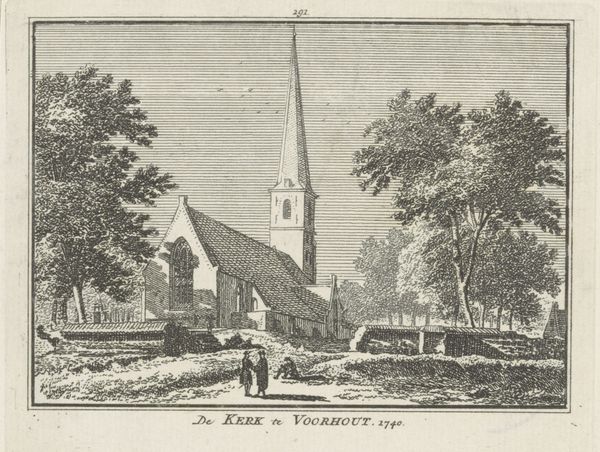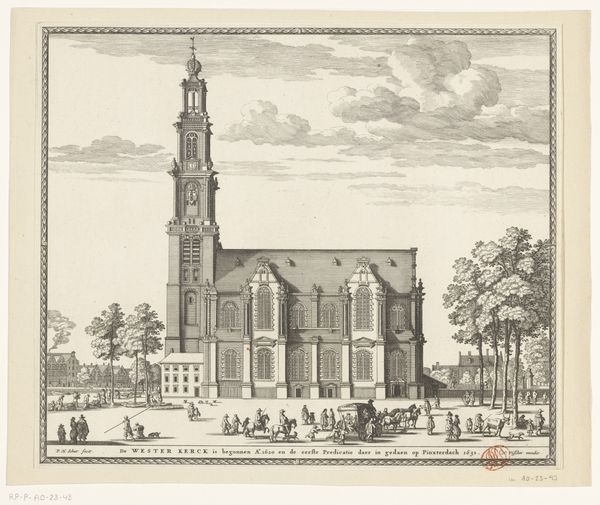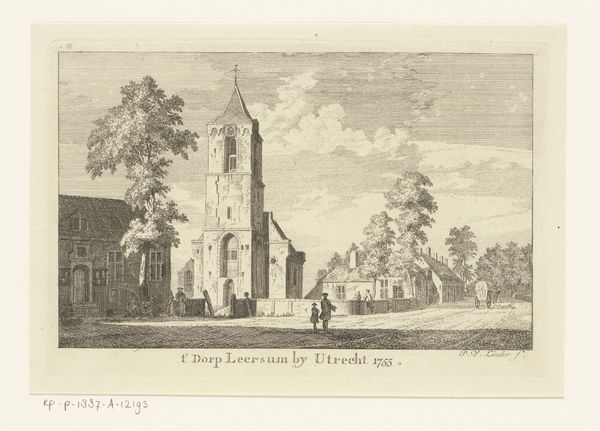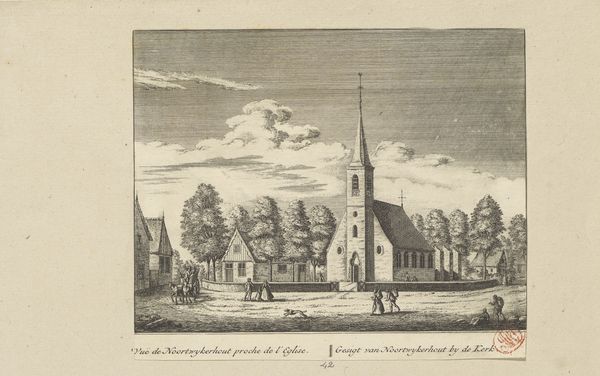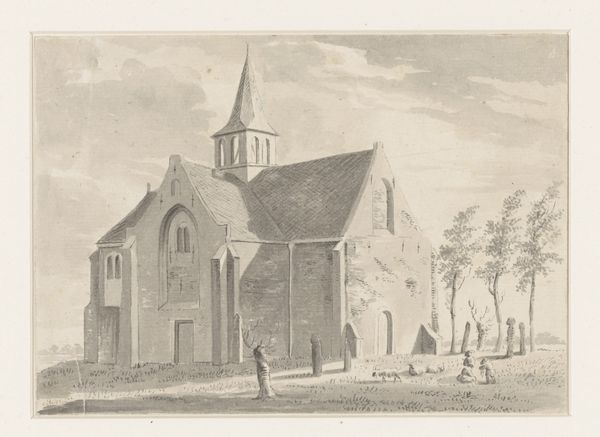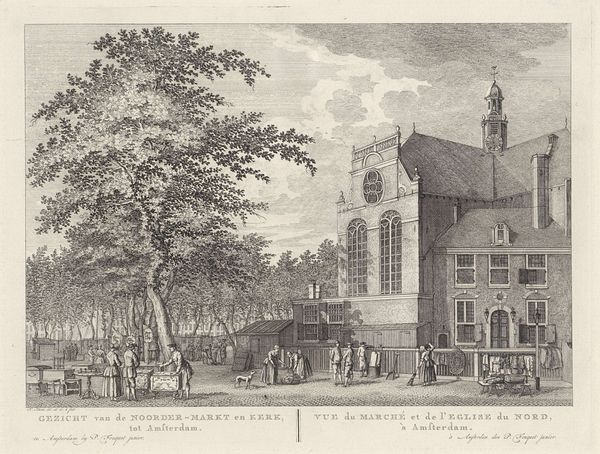
print, engraving
#
dutch-golden-age
# print
#
old engraving style
#
landscape
#
cityscape
#
engraving
Dimensions: height 160 mm, width 210 mm
Copyright: Rijks Museum: Open Domain
Curator: This engraving, "Gezicht op Leimuiden," created sometime between 1742 and 1784, offers us a glimpse into a Dutch cityscape by Hendrik Spilman. Editor: My first impression is how calm it feels. There’s an almost ethereal quality to the light. And look at the detail in the trees – a real emphasis on texture! Curator: Spilman, indeed, excels at capturing detail. These prints, often disseminated widely, played a crucial role in shaping perceptions of places like Leimuiden. The engraving was not just a depiction; it was a piece of public imagery influencing how people saw and understood the town. Editor: I’m intrigued by the technique. Imagine the labor involved in etching all those lines onto the plate. It makes you consider the economics of printmaking – who had access to these images and what kind of social value did these reproduced landscapes hold? Curator: Precisely. The church dominates the scene, subtly reminding viewers of the prevailing social order. Yet, notice the inclusion of everyday figures: a family, some sheep. Spilman is weaving a narrative about community, albeit a carefully constructed one. Editor: Yes, I am interested in how Spilman would have achieved these gradiations of light. Do you think he would have used different tools to create various kinds of line thicknesses, perhaps varying the pressure with which he held the burin, the engraving tool? Curator: Such elements were deliberately chosen to resonate with the artistic and societal sensibilities of the time. These engravings circulated widely through the Netherlands, fostering a sense of shared identity. Editor: Considering the labor investment in making these plates, these prints likely provided employment and served a role as affordable and accessible art for the Dutch middle class. These works straddled a line between artisanal craft and commercial art. Curator: Examining these images helps us understand the relationship between art, power, and public perception in 18th-century Netherlands. Editor: It leaves you wondering how Spilman himself experienced Leimuiden, and to what extent that informed his craft.
Comments
No comments
Be the first to comment and join the conversation on the ultimate creative platform.

